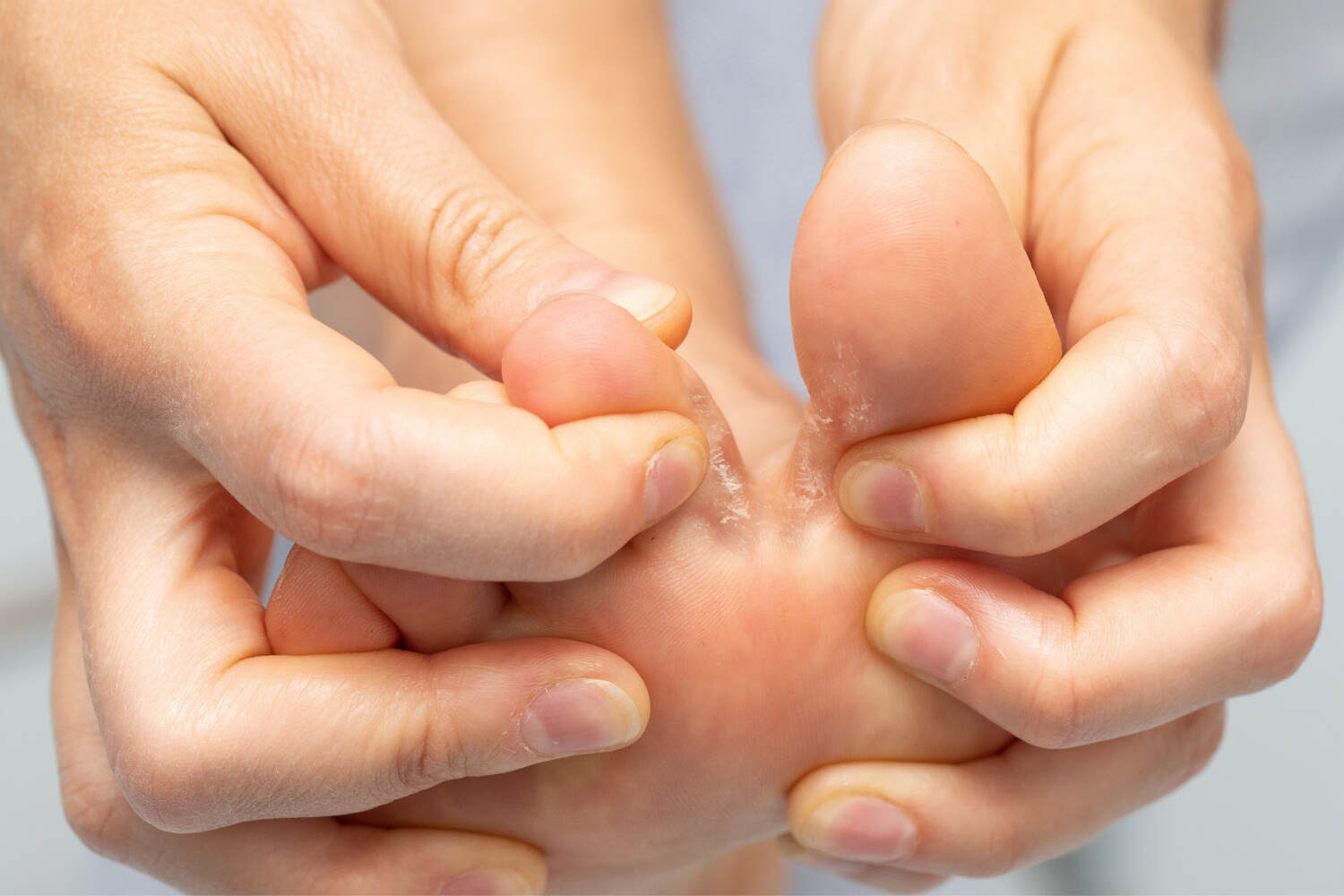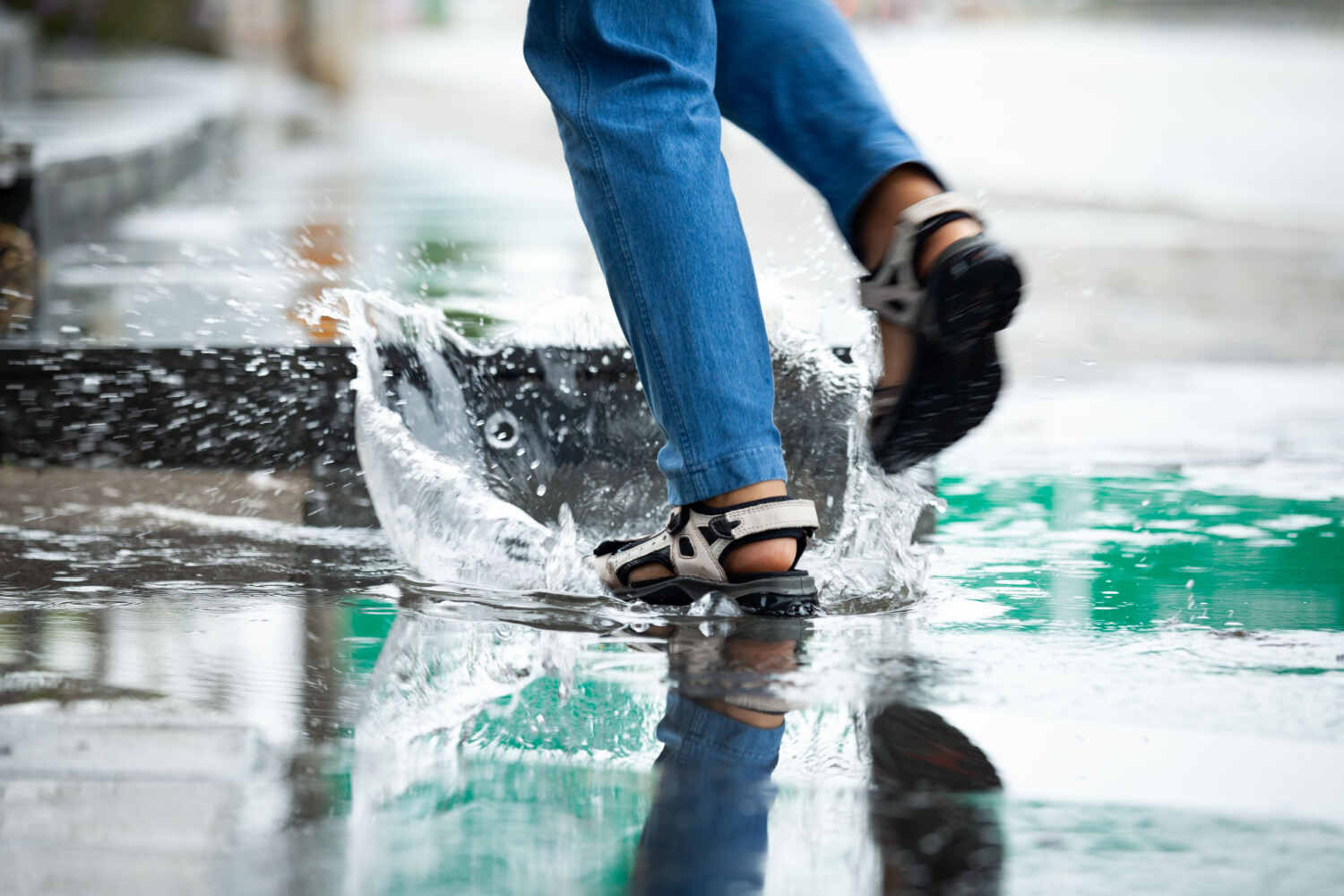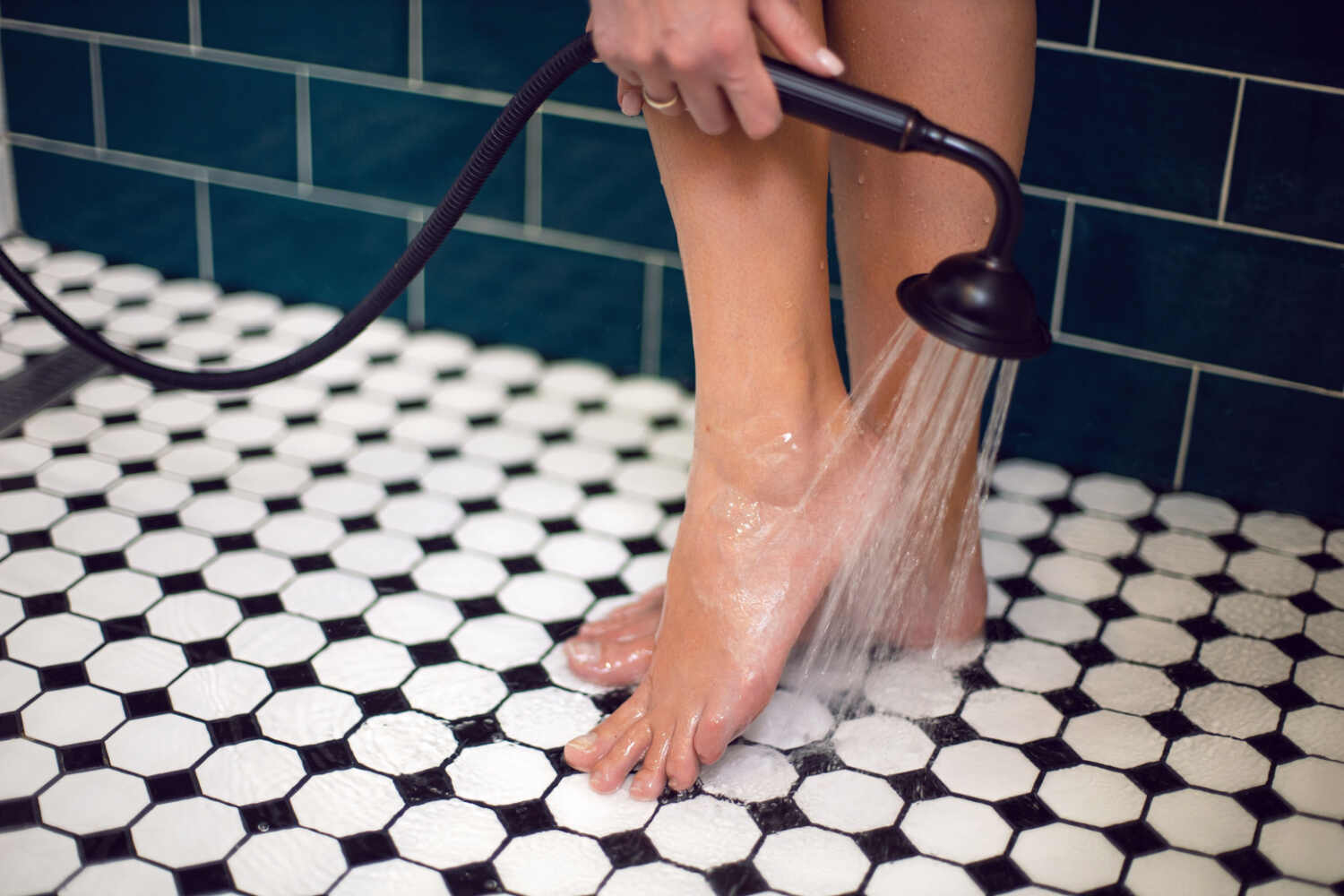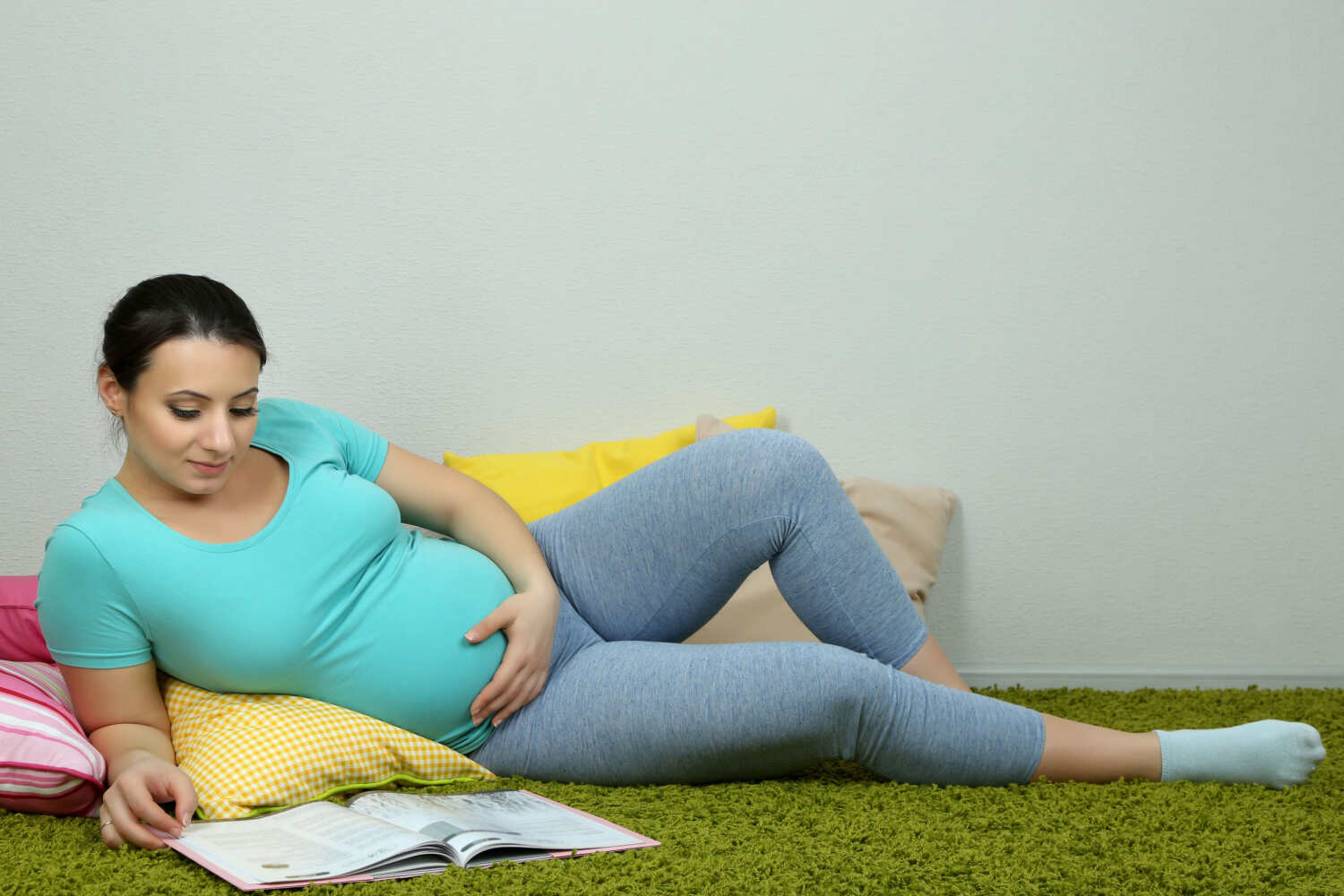
Did you know sweating is a common symptom of pregnancy? Many pregnant women experience night sweats or excessive sweating during the day due to all the changes happening in the body. Excessive sweating can lead to fungal infections including athlete’s foot during pregnancy.
Pregnancy is a time to be extra cautious. One cannot risk catching an infection or a disease because treating it with medications can be complicated. Be it bacterial or fungal, you should never ignore an infection or wait for it to go away on its own, especially when you are pregnant. Read on to learn more about Athlete’s foot during pregnancy.
In This Article
- What is an Athlete’s Foot?
- Causes of Athlete’s Foot During Pregnancy
- Treatment for Athlete’s Foot During Pregnancy
- Preventing Athlete’s Foot During Pregnancy
- Top 5 Home Remedies for Athlete’s Foot During Pregnancy
- When Should You See a Doctor?
- FAQ’s
What is an Athlete’s Foot?
Athlete’s foot, also known as Tinea Pedis, is a fungal infection that causes inflammation in the sole and the skin between the toes. Unlike what the name suggests, an athlete’s foot can affect both athletes and non-athletes alike.
Since it is a fungal infection, it can easily transfer from one person to another through direct contact. Walking bare feet on the surface a person with athlete’s foot walked on, can cause easy transfer of the fungi from one person to another.
Identifying an athlete’s foot can be tricky as different people have symptoms of varying degrees and in different areas. It can be easily mistaken for dry skin on the soles of the feet. An athlete’s foot can cause itching, a burning sensation, or even lead to cracks and fissures on the skin surface. All of which are similar to dry skin.
Causes of Athlete’s Foot During Pregnancy

As fungi thrive in moist and damp areas, the gap between the toes or the surface of the foot is a suitable place for the fungi to breed and grow. Wearing closed shoes can increase sweat, thus increasing the chances of contracting Athlete’s foot.
Some of the common causes of Athlete’s foot during pregnancy are
- Walking bare feet in areas with a lot of moisture and exposure to other’s feet – like common shower areas, swimming pool decks, locker rooms, yoga studios, etc.
- Wearing closed footwear with no ventilation, can trap moisture and make it suitable for the development of fungi
- Excessive sweating and exposure to excessive moisture in the feet or other areas
- Wearing smelly shoes and socks for an extended period of time without washing the socks or airing the shoes
- Diabetes and other health conditions that make one prone to infections in the legs
- Pedicure in a contaminated environment
- Eczema or other skin infections
Treatment for Athlete’s Foot During Pregnancy
Since multiple causes can lead to an athlete’s foot, the treatments are also many and differ according to the cause. Overall, keeping the feet dry and clean can help bring the infection under control. Here are some of the treatment options that your doctor may suggest based on your condition
- Anti-fungal creams and ointments
- Anti-fungal powders and medications
- Topical corticosteroid creams
- Cleaning the toenails and infected areas
- Soak the feet in water mixed with vinegar
Preventing Athlete’s Foot During Pregnancy

If the athlete’s foot is due to a fungus, it can be very contagious and difficult to prevent spreading. Since the exact cause for the germination or spread of this fungus is unknown, it can be difficult to prevent athlete’s foot at all times. However, you can take the following precautions to reduce the chances of contracting the infection:
- Always wash your feet with soap and water after walking outside bare feet (locker rooms, swimming deck, etc.)
- Wear footwear or socks wherever possible
- Wash your socks regularly and never wear sweaty socks
- If your footwear does not facilitate ventilation, ensure you air your feet to get rid of the sweat and moisture
- Always dry your feet after washing, especially between your toes
- Never wear closed footwear with wet or moist feet. Dry your feet before wearing such footwear
- Do not share your socks or towels and always wash them regularly
- If your feet are prone to sweating and you have to wear closed footwear, use talcum powder to absorb the moisture and keep your feet dry
- If you notice any symptoms or rashes in your feet, soak them in warm water mixed with salt or vinegar
- If your pet starts losing a lot of hair suddenly, take them to the vet to rule out Athlete’s foot.
Top 5 Home Remedies for Athlete’s Foot During Pregnancy

An athlete’s foot mostly affects the feet, especially between the toes where moisture often gathers. If you contract athlete’s foot, you can try the following home remedies to help it clear out quickly
1. Keep Your Feet Clean
Wash your feet with soap and water, twice daily. Soak feet in a tub of warm water mixed with salt crystals or vinegar. Dry your feet, especially between the toes, after washing. Wash the towel separately and do not reuse it without washing it.
2. Wear Cotton Socks
Wear cotton socks at home, or with your footwear when you step out. Opt for cotton socks and stockings instead of nylon or other materials that do not absorb moisture or facilitate ventilation. The cotton socks will absorb the moisture and help keep the feet dry at all times
3. Medications
Dust antifungal powder in the affected areas before wearing any footwear. Ask your doctor for an anti-fungal cream and use it as per directions
4. Ventilate Your Feet
Wear open slippers or footwear with good ventilation. Avoid wearing closed footwear until the infection has cleared. Do not share your socks or footwear with anyone
5. Use Dedicated Footwear
Always wear footwear when walking in public areas. If regular footwear is not allowed, use dedicated footwear for that specific location and inform the concerned people about the infection and your intention to not spread it to others.
When Should You See a Doctor?
If you notice any rash on one or both feet or hands, you need to check it immediately. If it is not an Athlete’s foot, it can be some other infection, which will also require medical attention. If your rashes get worse or your skin starts peeling due to the infection, you need to check with your doctor at the earliest.
These infections can become very itchy and touching the infected area can cause the infection to spread to other areas. Not attending to the infections in time can lead to complications like
- Fungal nail infections
- Infection spreading to the groin
- Infection spreads to skin on other parts of the body
- Secondary bacterial infections
All of these can be very difficult to treat during pregnancy due to the limitations of the medication. So, it is important to consult your doctor before the infection gets serious or spreads to other parts of the body.
Athlete’s foot during pregnancy is not rare but it is not something one would want to suffer with either. A fungal infection, in your feet between your toes can be very uncomfortable. During pregnancy, you should always be extra cautious and always seek medical help rather than self-medicating.
FAQ’s
1. Can I pass the athlete’s foot to my baby?
If you handle your baby after touching the infected area, you can spread the fungus to the baby. Athlete’s foot in babies is very rare but it can spread through direct contact.
2. Is the athlete’s foot contagious?
Yes, Athlete’s foot is highly contagious. It is caused by a fungus and direct contact with the infected area or coming in contact with a contaminated surface can spread the infection.

